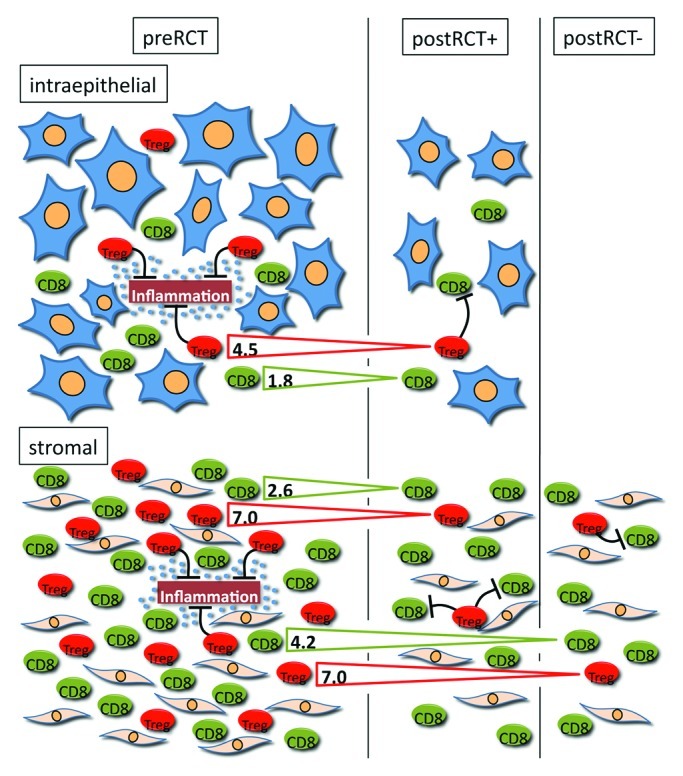
Figure 1.Radiochemotherapy induced changes of the inflammatory infiltrate in the stromal and intraepithelial compartment of HNSCC and possible functions of Treg in tumor progression: On the left side the situation in the untreated tumor is depicted with a higher number of inflammatory cells in the stromal compared with the intraepithelial compartment. In this context Treg might have anti-tumoral effects by the suppression of a potentially oncogenic chronic inflammation. On the right side two possible outcomes after RCT are shown. In some tumors after RCT residual tumor epithelia were still present (postRCT+) whereas in others no tumor rests were detectable and only a scar remained in the former localization of the carcinoma (postRCT+). Like in the preRCT state the numbers of inflammatory cells in the stroma predominated, however, the ratio was changed in favor of the intraepithelial cells. Treg and CTL numbers decreased after RCT in both compartments. The numbers in the arrows indicate the fold reduction of both cell types when comparing tumors before and after treatment (+/− residual tumor). The effect of RCT on Treg numbers was more pronounced than on CTL numbers inducing a shift toward a higher CTL/Treg ratio. In this setting low numbers of Treg might be beneficial by a reduced suppressive effect on tumor specific CTL and thereby the anti-tumoral immune response.
